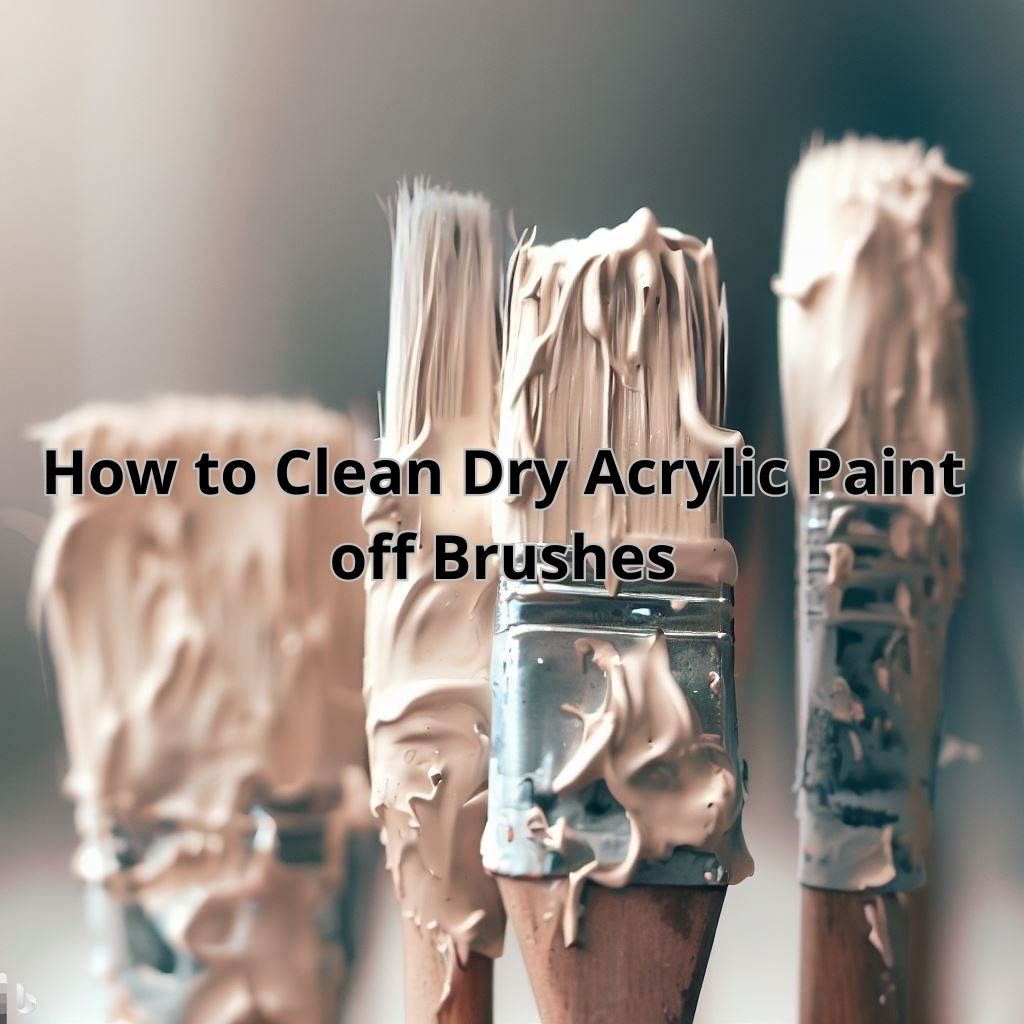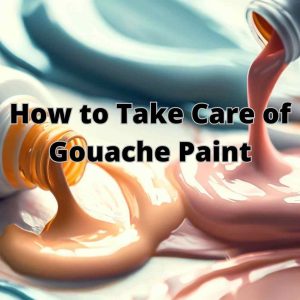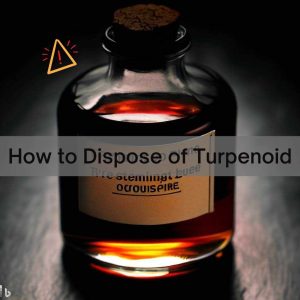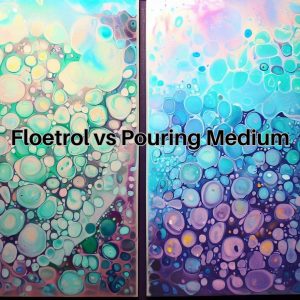Acrylic paints are a popular choice for artists due to their versatility and fast drying time. But cleaning acrylic paint off brushes can be a daunting task.
Cleaning acrylic paint off brushes is crucial for maintaining the quality of the bristles and ensuring they last longer. Leaving paint on brushes can cause the bristles to harden, making them unusable.
Additionally, if you mix different colors without properly cleaning your brush, it can affect the color accuracy of your next painting.
This guide will provide you with a step-by-step process on how to clean dry acrylic paint off brushes and maintain their quality.
What Type Of Bristle Is On Your Brush?
When it comes to cleaning the brushes, the type of brushes is essential too.
However, not all brushes are created equal, and one of the most important factors to consider is the type of bristle used.
There are two main types of brush bristles: Synthetic Bristles and Natural Fibers. Each type has its own unique properties that make them suitable for different uses.
Synthetic Bristles
Synthetic bristles are made from nylon or polyester and are typically used for painting with water-based paints such as acrylics.
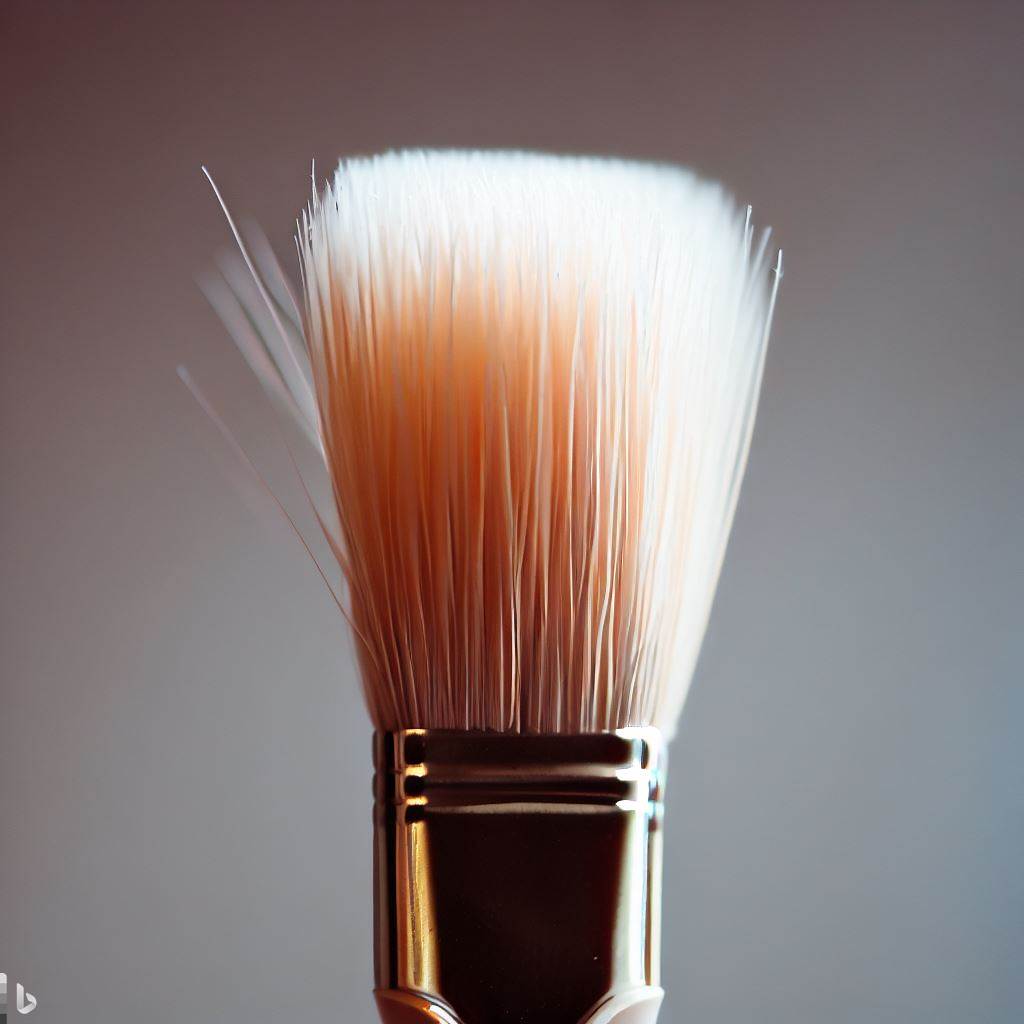
They are more resilient than natural fibers and can withstand repeated use without becoming damaged or frayed. Synthetic bristles are also easy to clean and maintain
Natural Fibers
Natural fiber bristles are made from animal hair, such as hog or sable hair. They have their own unique advantages, natural fiber brushes require more maintenance and are not as durable as synthetic brushes.
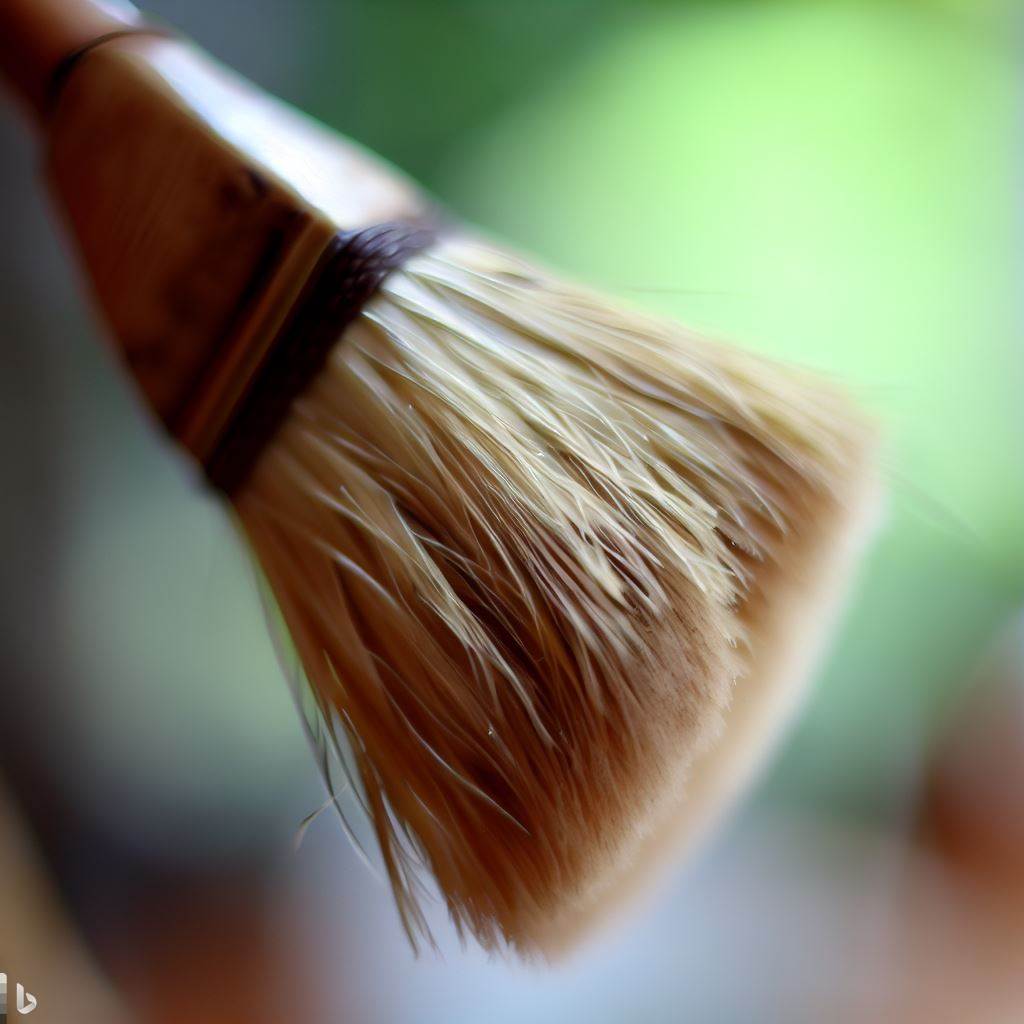
They can become damaged or worn out over time. The harsh chemicals used to remove acrylic are significantly less effective on these natural fibers.
Part 1: Materials Needed
To clean dry acrylic paint off brushes, you’ll need a few essential materials.
A brief explanation of each material:
- Paper towels: Used for wiping excess paint from the brush
- Cleaning solution: Removes the paint from the bristles
- Container: Used to hold the cleaning solution
- Brush spinner or tank: Used to deep clean the brush
Part 2: Pre-Cleaning Steps
Before beginning the actual cleaning process, there are a few steps you should take to prepare your brushes. These steps will help make the cleaning process smoother and more effective.
Removing excess paint from the brush
The first step is to remove as much excess paint from the brush as possible. You can do this by wiping the brush against the edge of your paint palette or a piece of scrap paper.
You can also use a palette knife or a plastic card to scrape the excess paint off the brush.
Old Comb for Physical Removal
An old comb can be used to gently scrape off the paint from the bristles. Hold the brush under running water while using the comb to scrape off the paint.
This will prevent the paint from hardening further and make the cleaning process easier.
Giving Your Brush a Haircut
If the dried paint is particularly stubborn and has hardened at the base of the bristles, giving the brush a haircut can help.
Use a pair of scissors to carefully trim the bristles down, removing any dried paint along with them. Be careful not to cut off too much of the bristles as this can affect the brush’s performance.
Once the bristles have been trimmed, proceed with the cleaning process to ensure that all remaining paint is removed.
Wiping excess paint from the brush with a paper towel
Next, you can use a paper towel to wipe any remaining excess paint from the brush. Be sure to wipe the brush thoroughly to remove as much paint as possible.
Avoiding the use of hot water on brushes
One common mistake when cleaning brushes is to use hot water. Hot water can actually damage the bristles and cause them to lose shape.
Instead, use lukewarm water to rinse your brushes.
Soaking brushes in water
After removing excess paint, you can soak your brushes in water. This will help to loosen any remaining paint and make it easier to clean.
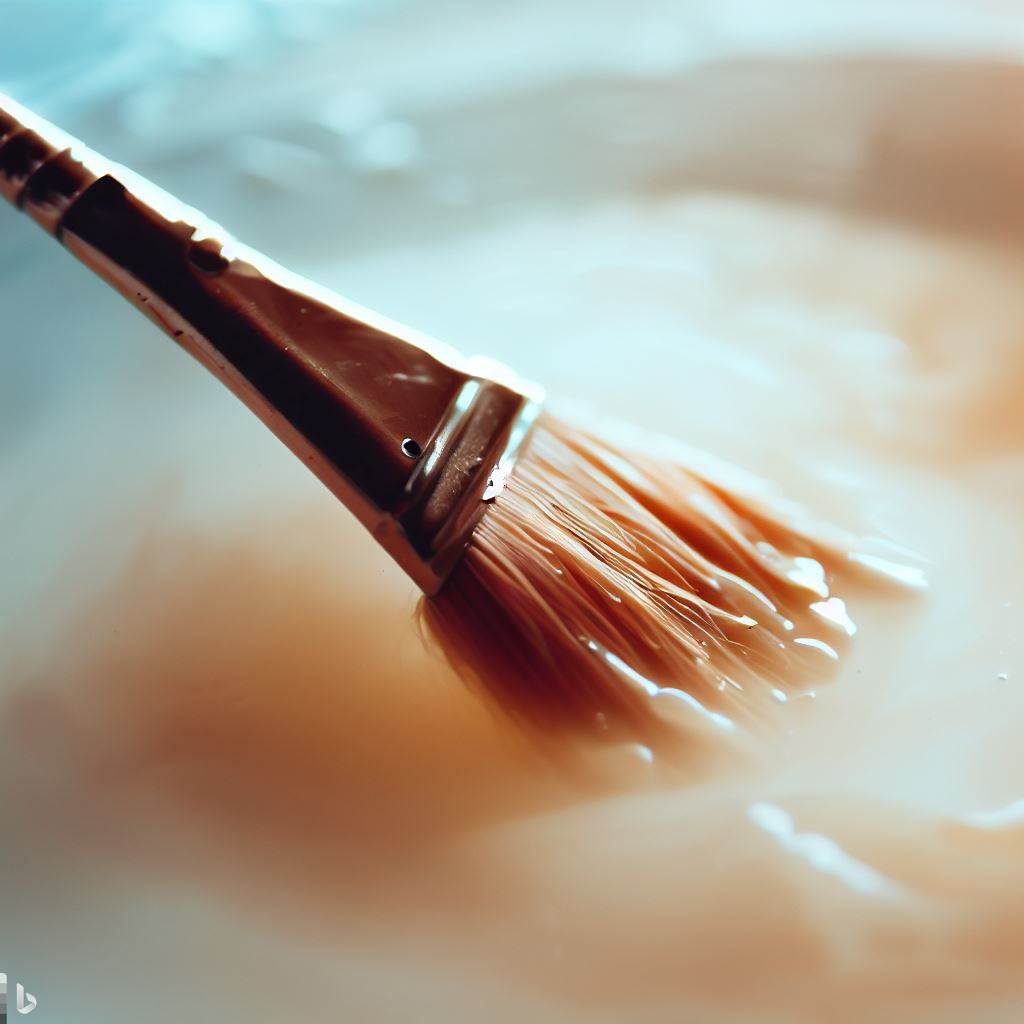
Soaking the brushes in the water
Soaking your brush in water will help loosen up the paint and make it easier to clean. Typically, 15-20 minutes of soaking time should be sufficient.
Be sure to use lukewarm water, and don’t let the brushes soak for too long, as this can also damage the bristles.
Part 3: Cleaning Solutions
There are various homemade and store-bought cleaning solutions you can use to clean your brushes.
DIY cleaning solutions
DIY cleaning solutions can be just as effective as store-bought options, and they are often cheaper and more readily available.
Acetone
Acetone is a popular solution for cleaning dried acrylic paint off brushes. It is a strong solvent that can easily break down the acrylic paint, making it easier to remove.
However, it can also be harsh on brushes and may cause them to dry out and become brittle over time.
- To use acetone, you should first remove as much paint as possible from the brush.
- Then dip the bristles into a container of acetone and swirl them around for a few minutes.
- Afterward, rinse the brush with warm water and reshape the bristles.
Isopropyl Alcohol
Isopropyl alcohol is another effective solution for cleaning dried acrylic paint off brushes. It is a milder solvent compared to acetone, which makes it less harsh on brushes. Isopropyl alcohol is also readily available and relatively inexpensive.
- To use isopropyl alcohol, first, remove as much paint as possible from the brush
- Then dip the bristles into a container of isopropyl alcohol and swirl them around for a few minutes.
- Afterward, rinse the brush with warm water and reshape the bristles.
Hand Sanitizing Gel
Hand sanitizing gel may seem like an unlikely solution for cleaning dried acrylic paint off brushes, but it can actually work quite well. The alcohol content in the gel can break down the paint and make it easier to remove.
- To use hand sanitizing gel, simply apply a small amount to the bristles of the brush and work it in with your fingers.
- Then, rinse the brush with warm water and reshape the bristles.
This method is not recommended for heavily caked-on paint or for delicate brushes, as the rubbing motion can cause damage.
Vinegar and baking soda
One popular DIY solution for cleaning dried acrylic paint off brushes is a mixture of vinegar and baking soda.
Vinegar is a natural solvent that helps break down the paint while baking soda acts as a mild abrasive to loosen any stubborn particles.
- To use this solution, mix equal parts of vinegar and baking soda in a container.
- Dip the brush in the solution and swirl it around for a few minutes, making sure to work the solution into the bristles.
- Rinse the brush with cool water and repeat the process if necessary.
Dish soap and olive oil
Dish soap is known for its ability to cut through grease, making it an excellent choice for removing dried acrylic paint. Olive oil helps condition the brush bristles, ensuring that they stay soft and pliable.
- To use this solution, mix one-part dish soap with two parts olive oil in a container.
- Dip the brush in the solution and swirl it around for a few minutes.
- Rinse the brush with cool water and repeat if necessary.
Soap and Water
Soap and water can be a good solution to clean brushes. Use mild soap and water to clean the brush. Rinse with cool water and repeat if necessary.
Store-bought cleaning solutions
If you prefer to use store-bought cleaning solutions, there are many options available.
One of the most popular store-bought brush cleaners is the “The Masters” Brush Cleaner and Preserver. This product is designed to clean and condition brushes made from natural and synthetic fibres.
To use, wet the brush and work the cleaner into the bristles with your fingers or a brush-cleaning tool. Rinse the brush with warm water and repeat the process until the brush is clean.
Another option is the U.S. Art Supply Brush Cleaner and Restorer. This cleaner is designed to remove dried acrylic paint from brushes and restore their shape and flexibility.
- To use, dip the brush in the cleaner and work it into the bristles with your fingers or a brush-cleaning tool.
- Rinse the brush with warm water and repeat the process until the brush is clean.
Part 4: Deep Cleaning Techniques
Deep cleaning of your brushes is necessary when they have been neglected for a long period of time or when the paint has dried deep inside the bristles. There are a few tools you can use to deep clean your brushes effectively.
Brush spinner
A brush spinner is an electric tool that rotates the brush quickly to remove all the paint from the bristles. It is a quick and easy way to deep clean your brushes.
To use a brush spinner, you need to attach the brush to the spinner, turn it on, and let it spin for a few minutes. The centrifugal force removes the paint from the bristles.
Brush cleaning tank
A brush cleaning tank is a container that has a cleaning solution and a wire mesh at the bottom.
To use a brush cleaning tank, you need to fill it with the cleaning solution, dip your brush in the solution, and move it around on the mesh. This motion will help loosen and remove the paint from the bristles.
Part 5: Drying Brushes
Drying your brushes properly is just as important as cleaning them. Improper drying can cause the bristles to become misshapen, which can make it difficult to paint with them. Here are some steps to follow for proper drying:
- Blotting excess water from the brush: After cleaning your brushes, gently squeeze the bristles to remove any excess water.
Then, use a paper towel or cloth to blot the brush, removing as much water as possible.
- Reshaping brush bristles: After blotting, reshape the brush bristles to their original shape.
Use your fingers to gently reshape the bristles, making sure they are straight and not clumped together.
- Hanging brushes to dry: Finally, hang your brushes upside down to dry. This ensures that any remaining water drips away from the bristles and prevents them from becoming misshapen.
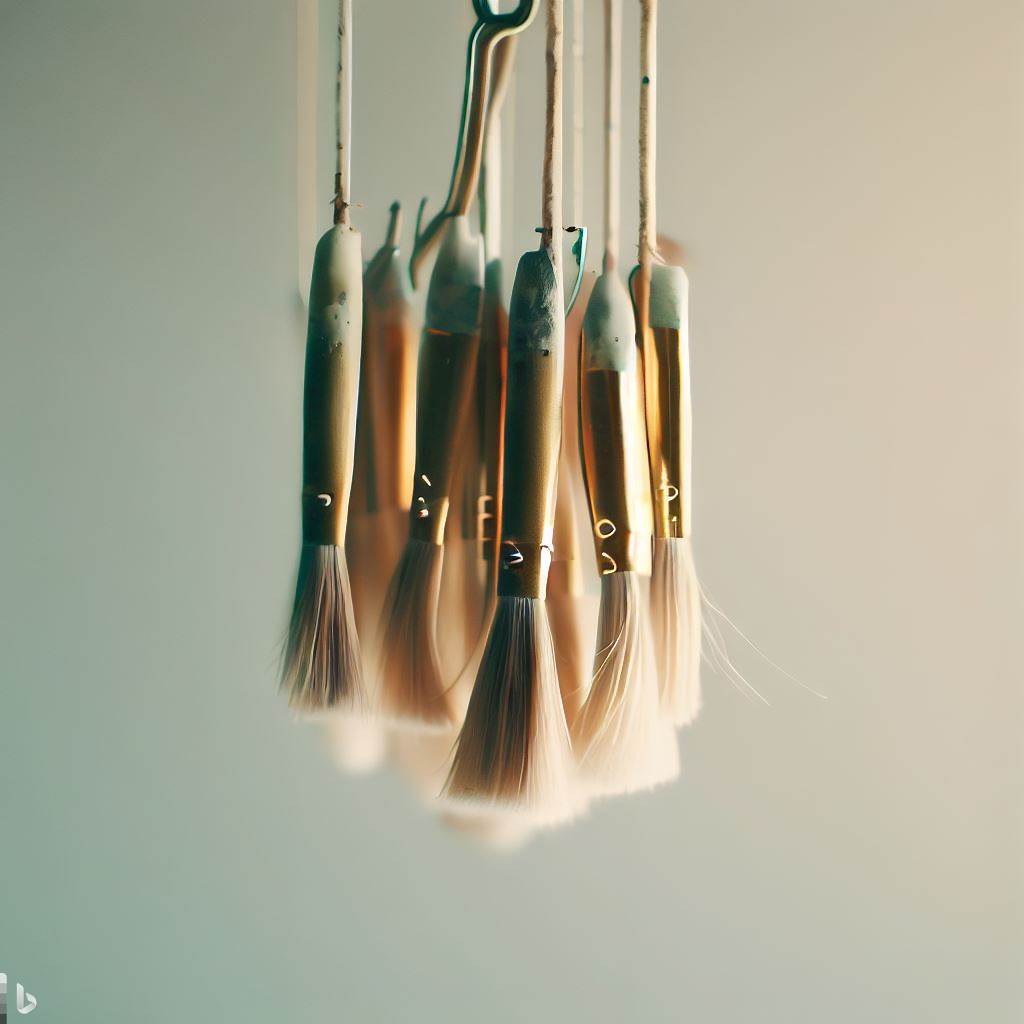
Hanging the brushes upside down
You can hang your brushes from a hook or use a special brush holder that suspends them in the air.
Part 6: Maintaining Brush Health
Maintaining the health of your brushes is essential for their longevity and better painting experience. Here are some tips to keep your brushes in good condition:
- Prevent paint buildup on brushes: Avoid leaving your brushes in the paint for too long. Instead, wipe off any excess paint on a paper towel or cloth as soon as you finish using them.
- Clean your brushes regularly: It’s important to clean your brushes regularly, especially after each painting session. This helps prevent paint from building up and becoming harder to remove.
- Proper storage of brushes: Store your brushes in a dry and cool place. Avoid storing them in direct sunlight or in a place where they can get crushed or bent. You can use a brush holder or wrap them in a cloth or paper to protect the bristles.
FAQs
- What if the acrylic paint is deeply embedded in the bristles?
If the acrylic paint is deeply embedded in the bristles, you may need to use a combination of pre-cleaning techniques such as gently scraping off excess paint and soaking the brush in a cleaning solution to loosen the paint. Repeat the process as necessary.
- Can I use dishwashing detergent instead of dish soap for cleaning my brushes?
A: While dishwashing detergent may contain similar ingredients to dish soap, it is not specifically formulated for cleaning brushes. It is best to use mild dish soap, as it is gentle on the bristles and effectively removes acrylic paint.
- How long should I soak my brushes in a cleaning solution?
The duration of soaking will depend on the severity of the dried paint. Generally, a few minutes to an hour of soaking in a cleaning solution can help loosen the paint. Monitor the progress and gently agitate the bristles during the soaking process.
- Can I use the same cleaning solutions for other types of paint?
The cleaning solutions mentioned in this guide are specifically intended for removing dry acrylic paint. Different types of paint may require different cleaning methods and solvents, so it’s important to refer to specific guidelines for each type of paint.
- Are there any eco-friendly alternatives for cleaning solutions?
Yes, if you prefer eco-friendly options, you can consider using plant-based soaps, such as castile soap, as an alternative to dish soap. Additionally, you can explore natural solvents like citrus-based cleaners or vegetable oil for removing dried acrylic paint.
- Can I use fabric softener to clean brushes?
No, fabric softener is not recommended for cleaning brushes. It may leave a residue on the bristles, affecting their performance and potentially interfering with the paint application.
- What should I do if the brush ferrule gets paint on it?
If paint gets on the brush ferrule (the metal part that holds the bristles), you can use a cotton swab or a small brush dipped in paint thinner or rubbing alcohol to carefully remove the paint. Be cautious not to damage the bristles while doing so.
Conclusion
In conclusion, cleaning your acrylic paint brushes regularly is essential for maintaining their longevity and quality.
By following the steps outlined in this guide, you can ensure that your brushes remain in excellent condition and provide you with optimal performance for years to come.
Remember to choose the appropriate cleaning solution based on the type of bristle on your brush and the severity of the dried paint. Also, be sure to use the proper pre-cleaning and deep-cleaning techniques to prevent damage to the bristles.
Maintaining the health of your brushes is a crucial aspect of being an artist and will lead to a more enjoyable and successful painting experience. So take care of your brushes, and they will take care of you!
Removing dried acrylic paint from your brushes can be a challenge. For daily maintenance and to avoid this issue, learn how to clean your acrylic paint brushes between colors.

